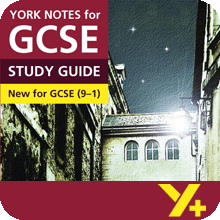Examiner's Notes
You assessed this answer as Grade 3.
Hover over the highlighted text to read the examiner’s comments.
Question: Read from ‘It was a wild, cold, seasonable night’ to ‘the maid lifted up her voice and now wept loudly’ (pages 37‒8).
‘Dr Jekyll and Mr Hyde makes a terrifying Gothic novel from everyday life.’ Write about how Stevenson combines contemporary Victorian London with the Gothic tradition to make a terrifying story. In your response you should:
- refer to the extract and the novel as a whole
- show your understanding of characters and events in the novel
- refer to the contexts of the novel.
Gothic literature was popular in the 1800s, including classics such as ‘Frankenstein’ by Mary Shelley and ‘Dracula’ by Bram Stoker. Gothic novels have dark themes, like the supernatural, death and terror. Madness, ghosts, curses and monstrosities feature in them, and many are set in unusual and spooky settings such as castles, dungeons and forests. ‘Jekyll and Hyde’ includes terror, madness and the supernatural, but puts them in the ordinary London of Stevenson’s time.
In this extract, Poole and Utterson walk to Jekyll’s house. The familiar London streets look different, empty of people in a cold wind. This fits with the emotions of Poole and Utterson, who are afraid. Stevenson uses personification to get emotion into the scene, with trees ‘lashing themselves along the railing’. Lashing is whipping, a painful experience, and the trees are doing it to themselves, which sounds unnatural. Poole’s state of mind is ‘strangling anguish’ and his voice is ‘harsh and broken’. Extremes of emotion like terror and pain are common in the Gothic tradition.
The setting is familiar. Utterson knows the streets, and Jekyll’s house is lit by a bright fire. This should be reassuring. The servants are ‘huddled together like a flock of sheep’, and that sounds quite nice and even a bit funny. But the maid’s ‘hysterical whimpering’ and Poole’s statement that they are all afraid don’t fit with this cosiness at all.
Stevenson mixes normal life and Gothic tradition elsewhere in the novel. The story is set in normal, 19th-century London life with ‘freshly painted shutters’ and ‘well-polished brasses’. It looks as if Jekyll is ill, mad, or trapped by a criminal. These would be bad, but fairly normal, and not as strange as what is really happening. Even in Jekyll’s final account of what he’s done, and when Lanyon sees the transformation, Stevenson stresses scientific details. This makes it look normal at the same time as making it horrifying. For Victorian readers more worried about science than we are now, this might have played on people’s worries.
Stevenson makes ordinary London look Gothic outside the extract, especially in the journey to Hyde’s lodgings. It is shown as threatening and ‘like a district of some city in a nightmare’, with glimpses of miserable lives seen through the fog. The whole tale is concerned with terror and desperation. Jekyll is afraid and despairing at what is happening to him, Lanyon is horrified seeing Hyde transform, and Utterson fears for his friend. The maid is horrified at the murder of Carew on a peaceful evening.
When Jekyll explains what has happened, it sounds ordinary to start with. But soon his language becomes more extravagant and Gothic. He uses extreme images of a ‘devil … long caged’ and the parts of his personality struggling in the ‘agonized womb of consciousness’. His extreme language and images show how difficult it is to explain his ‘nameless situation’. Imagery uses familiar images to try to explain something unfamiliar. Stevenson is trying to do this with the whole story, telling something extraordinary in an ordinary setting. In the end, Jekyll can’t really explain. Even the extreme language he uses can’t go far enough to tell his tale fully.
The mix of normal, everyday life and the supernatural makes the tale more horrific because of the contrast and surprise. There are no vampires or dungeons, just normal middle-class people in London. This brings it closer to us and so is more shocking.
